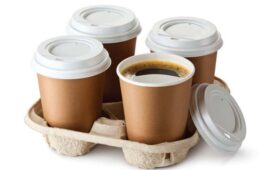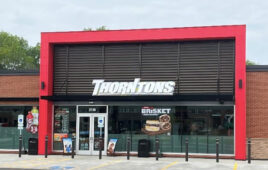 The COVID-19 pandemic fueled a two-year spike in the already growing demand for portable, deliverable food. As local lockdowns occurred across the U.S. (and globally), national and multinational convenience store chains developed systems and approaches to provide safe, portable food to customers regardless of the pandemic’s status.
The COVID-19 pandemic fueled a two-year spike in the already growing demand for portable, deliverable food. As local lockdowns occurred across the U.S. (and globally), national and multinational convenience store chains developed systems and approaches to provide safe, portable food to customers regardless of the pandemic’s status.
A major component of this adjustment was packaging. Foodservice IP conducted in-depth research in December 2020 and January 2022 to identify key convenience store trends. Our research indicates that packaging is key to convenience store success and that the three main packaging components stores need to prioritize are functionality, appearance and portability.
Functionality
Functionality is a key component of successful packaging. Containers should keep cold foods cold, hot foods hot and messy foods more manageable. A critical trend Foodservice IP has identified is that hot beverage vehicles (e.g., disposable insulated cups and insulating sleeves) have experienced a significant decline in use during the pandemic.
While there could be a few causes for this, one could be the increasing popularity of reusable travel mugs for hot beverages. Some convenience stores have responded to this trend by selling branded travel mugs that provide customers discounts for use. This addresses both customer demands for sustainable, functional packaging, while also promoting customer loyalty.
Appearance
According to our data, packaging appearance was a key factor in how consumers selected products at convenience stores. The top three qualities they looked for when assessing the freshness and quality of food products were:
- Expiration Dates (51% of consumers): Is it clear and visible?
- Food Visibility (45%): Can the consumer inspect the food in the packaging to ensure its freshness?
- Durability (20%): Has the packaging sufficiently protected the food or beverage so far? And will it continue to do so until the buyer has consumed the product?
Consumers use packaging appearance to determine the product’s quality, freshness, and ultimately, whether or not they will purchase the item.
Portability
As I noted at the beginning of this article, the pandemic caused a spike in demand for delivery and grab-and-go food, but that trend had been growing well before March 2020. While in-person dining is making a rebound, delivery is here to stay, including for convenience stores. 7-Eleven clearly recognized that when it created its delivery subscription service, 7NOW Gold Pass.
Packaging, therefore, needs to prevent spills, maintain proper temperature and protect the food’s structure during the delivery process. Keep in mind that the person transporting your products may not be the end consumer and may not protect your items the way an in-person shopper would. Packaging should not just be transportation-proof, it needs to be third-party delivery app-proof.
Foodservice IP’s Takeaway
Packaging is not exciting. It may be tempting, therefore, to overlook it and allocate resources elsewhere. If you have designed your packaging correctly, your customer may not even truly notice it. But if something goes wrong during delivery, and the customer blames the packaging, they may not order your products in the future.
In a time where delivery is a key driver of growth, convenience store companies who overlook packaging do so at their peril.
 Tim Powell is a principal at Foodservice IP, a management consultancy based in Chicago. He can be reached at [email protected].
Tim Powell is a principal at Foodservice IP, a management consultancy based in Chicago. He can be reached at [email protected].




